The (unbuilt) competition project for the National Collegiate Football Hall of Fame in New Brunswick, NJ, was a sort of religious building, or rather an architecture that expressed conceptual, physical and visual analogies between popular sport culture and Christian culture. The building was two things, really: a nave echoing the form of a basilica and an outside wall, largely higher than the rest of the building.
Over the ceiling of the nave, a mural represented scenes of football players, manifesting the link to baroque churches and their angels scenes. Along the main nave, lower rooms were the equivalent of singular chapels and each one was dedicated to a famous football player. In Venturi and Scott Brown’s vision, the football players were “Saints in the religion of sports“, holy figures in North-American culture.

On the outside: a big straight wall was standing like a billboard and a parking lot just in front of it. People could walk to the museum or stay outside and watch all the messages and signs conveyed by an electronc screen of thousands of small lights. “It was the beginning of the information age, or architecture as iconographic and relating to signs rather than space” (Robert Venturi, describing the building in this video)
The front is made out of one of those flashing light board systems. And you enter in a really sexy way–up ramps and through an entry door that is the shape of a football. Behind that is a long nave with chapels in ranks like a giant Italian villa [basilica?]. There is a hierarchy of the football saints; great projections and movies on the vaulting of the nave show the great football plays, and in the chapels are relics like those of saints. Here they would have the sweatshirt of Knute Rockne–the actual object that is reflected in the movies on the vaulting and on the front, electric billboard. C. Ray Smith, Supermannerism: New Attitudes in Post-Modern Architecture (New York: E. P. Dutton, 1977), p. 190.
An interesting anecdote comes from the pages of the site Quondam:
At the In Your Face symposium at NYU 29 September 2001, featuring Robert Venturi, Denise Scott Brown, Rem Koolhaas and others, I questioned Venturi about his unsureness regarding ‘content’ when it came to building facades that were also screens that present electronic imagery–Venturi pioneered this idea back in the 1960s with an unexecuted design for the College Football Hall of Fame. My point was that if architects design buildings where (some of) the facades are screens, that it might also be the ‘job’ of the architect to provide the content to be ‘screened’, or at least provide some sort of direction to how the screen facades might be fully utilized. After a full exchange with both Venturi and Scott Brown, the moderator of the symposium asked Koolhaas if he had any additional thoughts on this topic, to which Koolhaas replied, “I am not interested in discussing ‘content’.” Koolhaas has since then obviously changed his mind because the whole theme of the Koolhaas/OMA/AMO exhibit presently at Berlin, and the title of Koolhaas’ forthcoming book, is indeed Content.
All images © VSBA Architects and Planners
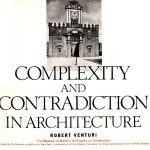
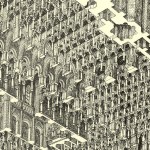
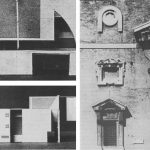
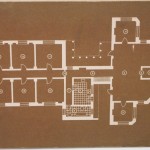
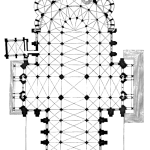
Nice, full images. I always wanted to build a computer model of this project. Now, for a start, I can trace the section and then just extrude it. I’ll let you know If I ever do it. All the best!
Please do and let us know of the results!
all the best,
fl
nice project – would have been interesting to see it realized!